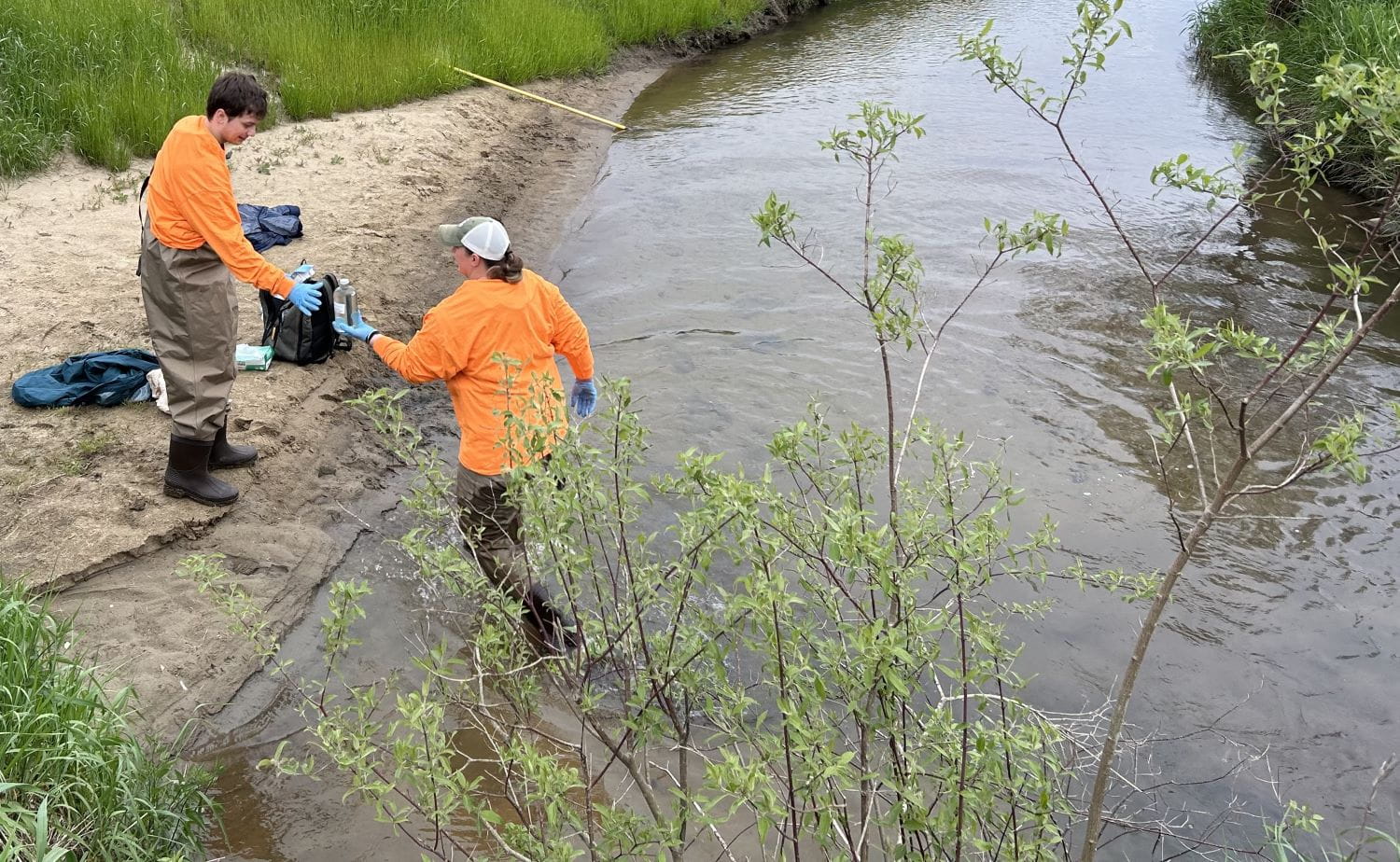The web Browser you are currently using is unsupported, and some features of this site may not work as intended. Please update to a modern browser such as Chrome, Firefox or Edge to experience all features Michigan.gov has to offer.
Michiganders convene to meet the challenge of microplastics
October 24, 2025
First-ever summit and dedicated week strengthen state’s leadership on a growing issue
They’re everywhere. Plastics surround us every day in the products we use at home, at work, and on the road. Most of us feel vaguely uneasy about the amount we can’t recycle or manage. Knowing how durable and long-lasting plastics are, we understand they don’t simply vanish. They just get ever smaller.
What does that mean in Michigan and beyond? That’s the focus of the state’s first-ever Microplastics Awareness Week, through Sunday, and Great Lakes Microplastics Summit, held virtually Oct. 22.
As a sign of the topic’s importance, the summit attracted nearly 2,700 registrants – a record number for an online event presented by the Michigan Department of Environment, Great Lakes, and Energy (EGLE). Registrants represented 48 U.S. states, 29 countries, and every continent but Antarctica. Attending were academics and students; federal, state, tribal, and local officials; representatives of business, industry, and advocacy organizations; researchers and scientists; and members of the public curious about this area of increasing awareness, concern, and action.
Microplastics range from the size of a pencil eraser to the limits of visibility. They’re present in Michigan’s water, soil, air, and wildlife in the form of beads, fragments, pellets, dust, film, foam, and fibers. They can be created when larger plastic items break up in sun and waves over time, or they can be manufactured, like microbeads and pellets. And they’re part of the estimated 10,000 metric tons of plastic entering the Great Lakes each year.
Studies in the Great Lakes show concentrations around urban and nearshore areas, especially where rivers and drains empty. The effects on human and environmental health are subjects of intensive research. Scientists suspect these particles can absorb and release harmful chemicals and may impact development and reproduction of aquatic species.
“Governor Whitmer has officially proclaimed this week as a time to raise awareness about the growing threat of microplastics and to empower individuals, communities, and organizations to take action,” EGLE Director Phil Roos told summit attendees. “And the time has come for everyone to take this threat seriously and move toward positive action to address it.”
Roos and EGLE Environmental Quality Analyst Eddie Kostelnik opened the daylong summit, which featured international experts from the University of Toronto, Rutgers University in New Jersey, University of Minnesota-Duluth, University of Illinois, Oregon State University, Eurofins Environment Testing in northern California, and Dutch design and engineering consultancy firm Arcadis.
Two of the speakers were featured in a recent Inside Climate News article about how microplastics research in the Great Lakes could inform national and global policies.
Presenters addressed questions like how microplastics spread, how they can be detected, what risks they present, and how they interact with the environment.
EGLE is stepping up its microplastics research and monitoring with a one-time $2 million state appropriation over five fiscal years (2025-29) to improve understanding of microplastics in Michigan’s lakes, rivers, and drinking water. The work includes EGLE’s Office of the Great Lakes and one new hire each in EGLE’s Water Resources Division and Drinking Water and Environmental Health Division.
The department will incorporate microplastics sampling into existing river and stream monitoring programs, study the occurrence of microplastics in public drinking water supplies, support external research with grant opportunities, and develop a statewide microplastics strategy to guide policies, monitoring, education, and prevention.
Meanwhile, Microplastics Awareness Week features opportunities for individuals, communities, and organizations to learn and act on a serious threat.
Switching to reusable bags and bottles, limiting single-use plastics whenever possible, and installing washing machine filters to reduce microfibers can help reduce the amount of plastics and microplastics households release into the environment. Here are other things individuals can do to expand their knowledge and make a positive difference:
- Discover the different types and relative amounts of plastic in each Great Lake with lake-by-lake data from The Great Lakes Plastic Cleanup.
- Drive community change with the Alliance for the Great Lakes’ Plastic Free Great Lakes Toolkit.
- Explore the Great Lakes Love organization and its goal of picking up 1 million pieces of trash.
- Join a community cleanup effort on land or water. The Great Lakes Plastic Cleanup website includes information on cleanup events throughout the state.
- Learn more on EGLE’s microplastics webpage and from webinars presented by the International Joint Commission and the National Academies of Sciences, Engineering, and Medicine’s Environmental Health Matters Initiative.
Author:
